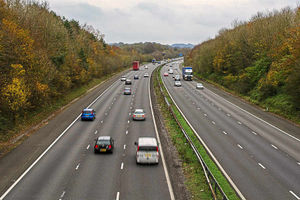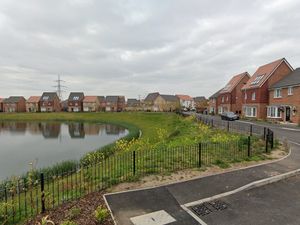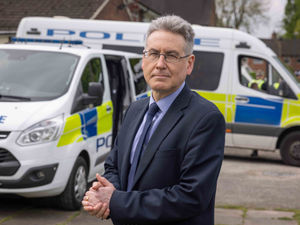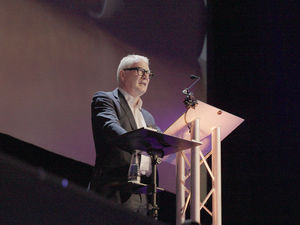Big Brother ready to get zap happy with motorway stealth cameras
Big Brother is zapping you and it's no wonder the Government seems to have abandoned the idea of road tolls – it's got a much more lucrative plan.

They're 'rolling out' a new generation of digital stealth cameras which will never run out of film and will check on motorists day and night.
At a cost of £150,000 each plus £25,000 a year to maintain, they don't come cheap. But they will more than pay for themselves on the basis of their record so far.
In just two months they have zapped 700 drivers on the M25 motorway in Kent. Critics say it's unfair because these cameras aren't painted yellow, giving drivers a chance to slow down. They're disguised as ordinary traffic-management cameras.
The bad news is they are coming to a road near you any day now.
All those gantries along the M6 from Birmingham to Stafford, like the gantries on the M42, will be littered with cameras.
They call it 'active traffic-management' but what it amounts to is the oppressive regime of Big Brother taking a giant leap forward.
Traffic management with variable speed limits was introduced on the M42 around Birmingham in 2006 and, in fairness, it has cut congestion along 10 busy miles of motorway.
But the gantries from the junction with the M40 to the M6 are crammed with a total of 247 spy cameras.
According to a Parliamentary written answer by Transport Minister Robert Goodwill last year, there are actually four different types of camera owned and run by the Highways Agency on the M42.
There are 16 fixed automatic number plate recognition cameras (ANPR), which are supposedly only used to measure 'journey-time reliability'.
There are 190 fixed monitoring cameras used 'to ensure that the hard shoulder is clear of stationary vehicles, debris or other obstructions before opening the hard shoulder as a live running lane. These cameras are not used to detect breaches of speed limits'.
There are 35 'pan, tilt and zoom cameras' used 'to monitor the motorway network, identify issues and deal with incidents'.
And then there are six Highways Agency digital enforcement cameras (HADEC).
Mr Goodwill said: 'These cameras in most part are only used when Active Traffic Management is in operation. However, all the HADEC sites are capable of enforcing speeds of up to the national speed limit. This is done at the discretion of the West Midlands Camera Enforcement Unit.'
All very interesting, as it suggests this is the total number of cameras operating along that motorway. However, Mr Goodwill also said the total 'does not include ANPR cameras which are wholly operated and maintained by the police and are subject to Home Office regulations'.
Ah, so there are even more than 247 cameras watching us on the M42 are there?
Maybe. The West Midlands Police say: 'In addition to being mounted within police vehicles, ANPR cameras within the West Midlands are used at fixed locations where they will help to detect, deter and disrupt criminality.
'In line with national policy, we do not disclose details of our fixed locations as this information is likely to be of benefit to offenders and if known could reduce the value of ANPR to policing.'
Spying on motorists isn't confined to motorways, of course. There are plans to hide these new 'smart' cameras in more or less every street where the local council decides to impose a 20 mph speed limit.
There is no escape.
The West Midlands Police camera enforcement unit caught no fewer than 57,114 motorists in the 12 months to last March. Between April and June they zapped another 15,180 drivers, according to a report to the Policing and Crime Board in September.
It's all very tedious and infuriating, especially when police guidelines supposedly suggest drivers should be allowed 10 per cent leeway when exceeding any given limit – meaning it's more or less OK to do 77 on a motorway.
Before the last General Election, the Tories promised to raise the speed limit to 80 on motorways.
The increase was actually announced in 2011 by that week's Transport Secretary, Phillip Hammond. He said: 'It is time to put Britain back in the fast lane of global economies and look again at the motorway speed limit which is nearly 50 years old, and out of date thanks to huge advances in safety and motoring technology.
'Increasing the motorway speed limit to 80mph would generate economic benefits of hundreds of millions of pounds through shorter journey times.'
This was abandoned two years later, supposedly because it might alienate women drivers – even though an AA survey found 53 per cent of women, and 73 per cent of men, in favour of an 80mph limit.
The anti-car lobby crushed the Tories' short-lived support for the motorist. Now stealth cameras will take the crusade to a whole new level.
Oddly, back in 2011 Mr Hammond actually accused the Labour Party of a 'shortsighted and misguided war on the motorist'.




